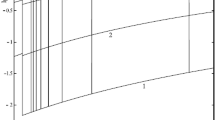Abstract
I have studied a number of flares for which good X-ray and optical data were available. An average lag of 5.5 s between hard X-ray (HXR) start and Hα start, and HXR peak and Ha peak was found for 41 flares for which determination was possible. Allowing for time constants the time lag is zero. The peak Hα lasts until 5–6 keV soft X-ray (SXR) peak. The level of Hα intensity is determined by the SXR flux.
Multiple spikes in HXR appear to correspond to different occurrences in the flare development. Flares with HXR always have a fast Hα rise. Several flares were observed in the λ 3835 band; such emission appears when the 5.1–6.6 keV flux exceeds 5 × 104 ph cm-2 s-1 at the Earth. Smaller flares produce no λ3835 emission; we conclude that coronal back conduction cannot produce the bright chromospheric network of that wavelength.
The nearly simultaneous growth of Hα emission at distant points means an agent travelling faster than 5 × 103 km s-1 is responsible, presumably electrons.
In all cases near the limb an elevated Ha source is seen with the same time duration as HXR flux; it is concluded that this Hα source is almost always an elevated cloud which is excited by the fast electrons. A rough calculation is given. Another calculation of Hα emission from compressed coronal material shows it to be inadequate.
In several cases homologous flares occur within hours with the same X-ray properties.
Radio models fit, more or less, with field strengths on the order of 100G. A number of flares are discussed in detail.
Similar content being viewed by others
References
Bethe, H.: 1933, Handbook Phys. 24, 519.
Brown, J. C.: 1973, Solar Phys. 31, 143.
Brown, J. C., Canfield, R. C., and Robertson, M. N.: 1978, Solar Phys. 57, 399.
Canfield, R.: 1974, Solar Phys. 34, 339.
Chapman, G.: 1970, Solar Phys. 13, 78.
Datlowe, D. W., Elcan, M. J., and Hudson, H. S.: 1974, Solar Phys. 39, 155.
Frost, K., Dennis, B., and Lencho, R. J.: 1971, in Labuhn and Lust (eds.), New Techniques in Space Astronomy, 185.
Hall, L. A.: 1971, Solar Phys. 21, 167.
Heasley, J. N., Mihalas, D., and Poland, A. I.: 1974, Astrophys. J. 192, 51.
Hoyng, P.: 1975, Thesis, Utrecht.
Hoyng, P., Brown, J. C., and van Beek, H. F.: 1976, Solar Phys. 48, 197.
Jefferies, J. T. and Orrall, F. Q.: 1965, Astrophys. J. 141, 519.
Kane, S. R. and Anderson, K. A.: 1970, Astrophys. J. 162, 1003.
Lin, R. P. and Hudson, H. S.: 1976, Solar Phys. 50, 153.
Ramaty, R. and Petrosian, V.: 1972, Astrophys. J. 178, 241.
Roy, J.-R.: 1976, Solar Phys. 48, 265.
Vorpahl, J.: 1972, Solar Phys. 26, 397.
Zirin, H.: 1955, Smithsonian Contr. to Astrophys. 2, 13.
Zirin, H.: 1972, Solar Phys. 26, 393.
Zirin, H.: 1978, submitted to Astrophys. J.
Zirin, H. and Tanaka, K.: 1973, Solar Phys. 32, 173.
Zirin, H., Pruss, G., and Vorpahl, J.: 1971, Solar Phys. 19, 463.
Author information
Authors and Affiliations
Rights and permissions
About this article
Cite this article
Zirin, H. Studies of solar flares using optical, X-ray and radio data. Sol Phys 58, 95–120 (1978). https://doi.org/10.1007/BF00152557
Received:
Revised:
Issue Date:
DOI: https://doi.org/10.1007/BF00152557



